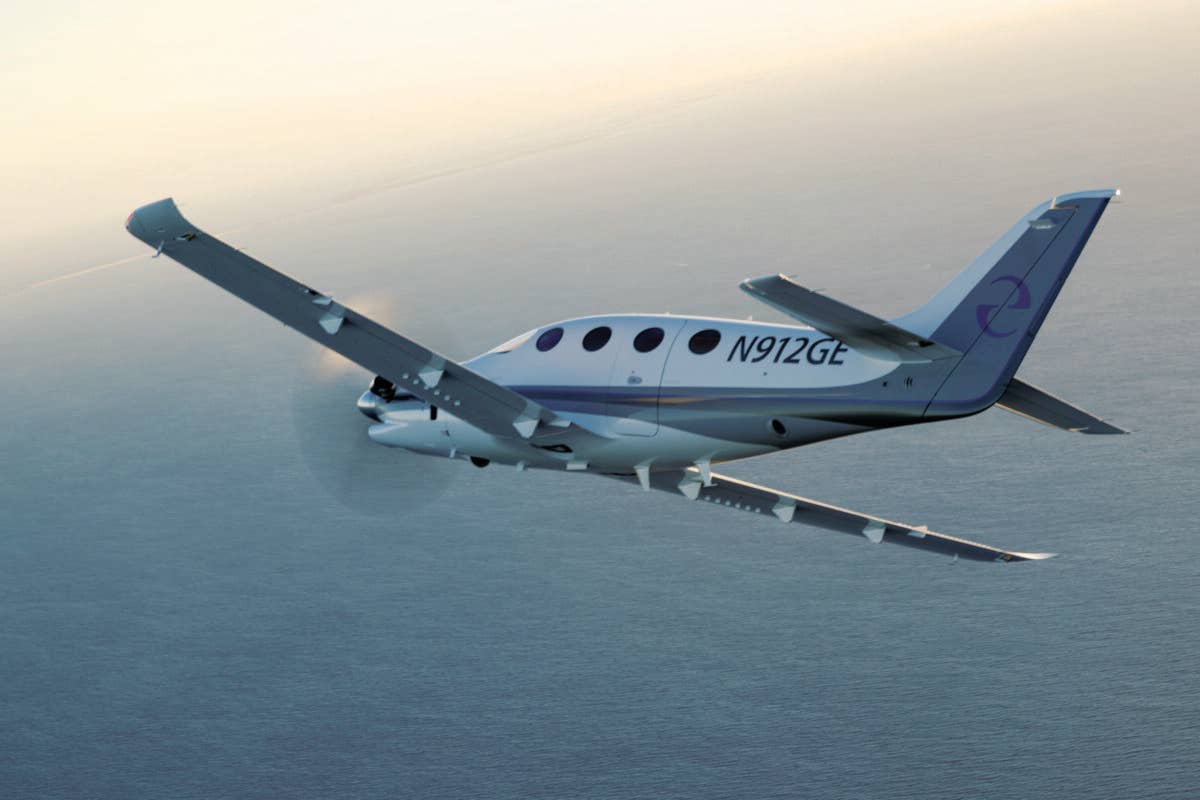Epic E1000 GX Earns FIKI Certification
The model underwent several years of extensive testing prior to gaining approval.

The Epic E1000 GX received its FAA type certificate in July 2021. [Credit: Jim Barrett]
Epic Aircraft’s E1000 GX single-engine turboprop has received its flight into known icing (FIKI) certification from the FAA.
According to the company, the newly approved de-icing system includes an optical ice detector and de-ice boots on the wings, horizontal stabilizer leading edges, and engine inlet along with a bleed air heated windshield and electrically heated propeller, air data probes, and AOA sensors. The E1000 GX is expected to incorporate those design modifications beginning with the first aircraft delivered in 2024.
“This certification process is one of the most challenging,” said Epic Aircraft CEO Doug King. “We began testing several years ago, flying the E1000 GX in all of the FAA-specified natural icing conditions. This FAA certification establishes that the E1000 GX can withstand known icing conditions in a real-world operating environment with minimal changes required of the airplane.”
Epic reports that more than 450 flight hours went into testing the GX for the FIKI certification. Testing began using 3D printed artificial ice shapes, going on to include flights in in natural icing conditions along with test “in normal operation and ice protection system failure conditions in icing tunnels and with artificial ice shapes to simulate ice build up attached to the aircraft's airfoils.” Epic says it tested 18 separate icing configurations in two icing wind tunnels, logging a total of 280 hours of icing wind tunnel testing.
King noted that retrofits for previously delivered certified aircraft, to include the E1000, will be available at the company’s factory service center in Bend, Oregon. His goal is to have the existing fleet upgraded by early 2025.
- READ MORE: We Fly: Epic Aircraft E1000 GX
The latest version of Epic’s E1000, the six-seat, all-composite E1000 GX received its FAA type certificate in July 2021. The GX offers a top cruise speed of 333 knots, full fuel payload of 1,100 pounds, and range of 1,560 nm. It is powered by the Pratt & Whitney Canada PT6A-67A engine and comes equipped with a three-screen Garmin G1000 NXi avionics suite, Garmin GFC 700 automated flight control system, and Hartzell five-blade composite propeller.

Subscribe to Our Newsletter
Get the latest FLYING stories delivered directly to your inbox






